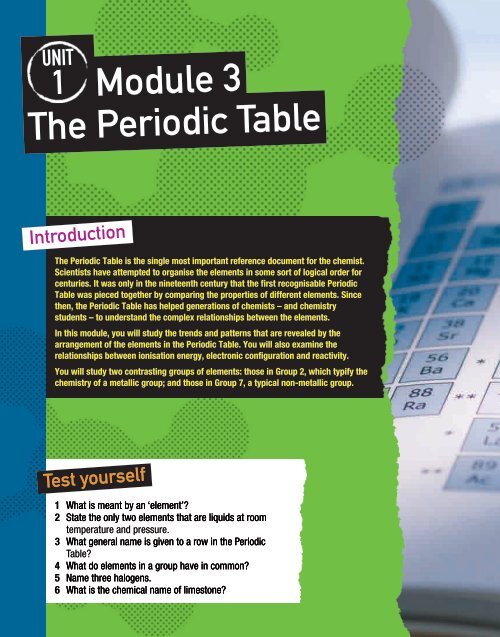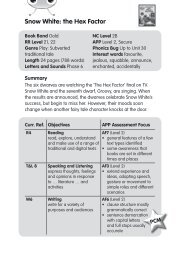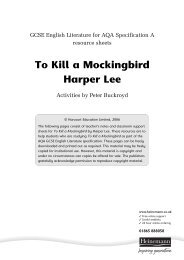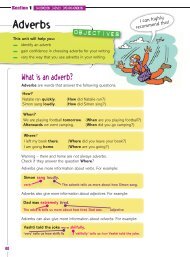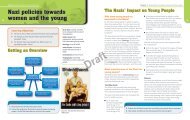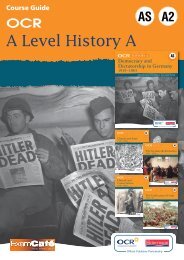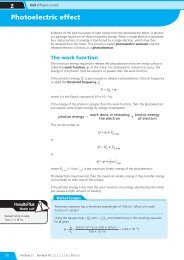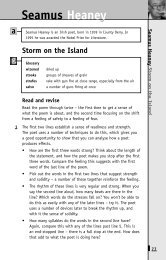Unit 1 Module 3 The Periodic Table - Pearson Schools
Unit 1 Module 3 The Periodic Table - Pearson Schools
Unit 1 Module 3 The Periodic Table - Pearson Schools
Create successful ePaper yourself
Turn your PDF publications into a flip-book with our unique Google optimized e-Paper software.
<strong>Unit</strong><br />
<strong>Module</strong> 3<br />
<strong>The</strong> <strong>Periodic</strong> <strong>Table</strong><br />
1<br />
Introduction<br />
<strong>The</strong> <strong>Periodic</strong> <strong>Table</strong> is the single most important reference document for the chemist.<br />
Scientists have attempted to organise the elements in some sort of logical order for<br />
centuries. It was only in the nineteenth century that the first recognisable <strong>Periodic</strong><br />
<strong>Table</strong> was pieced together by comparing the properties of different elements. Since<br />
then, the <strong>Periodic</strong> <strong>Table</strong> has helped generations of chemists – and chemistry<br />
students – to understand the complex relationships between the elements.<br />
In this module, you will study the trends and patterns that are revealed by the<br />
arrangement of the elements in the <strong>Periodic</strong> <strong>Table</strong>. You will also examine the<br />
relationships between ionisation energy, electronic configuration and reactivity.<br />
You will study two contrasting groups of elements: those in Group 2, which typify the<br />
chemistry of a metallic group; and those in Group 7, a typical non-metallic group.<br />
Test yourself<br />
1 <br />
2 <br />
p p.<br />
3 <br />
<strong>Table</strong>?<br />
4 p p <br />
5 . .<br />
6 <br />
935 chemistry.U1 M3.indd 76 13/11/07 11:48:25 am


